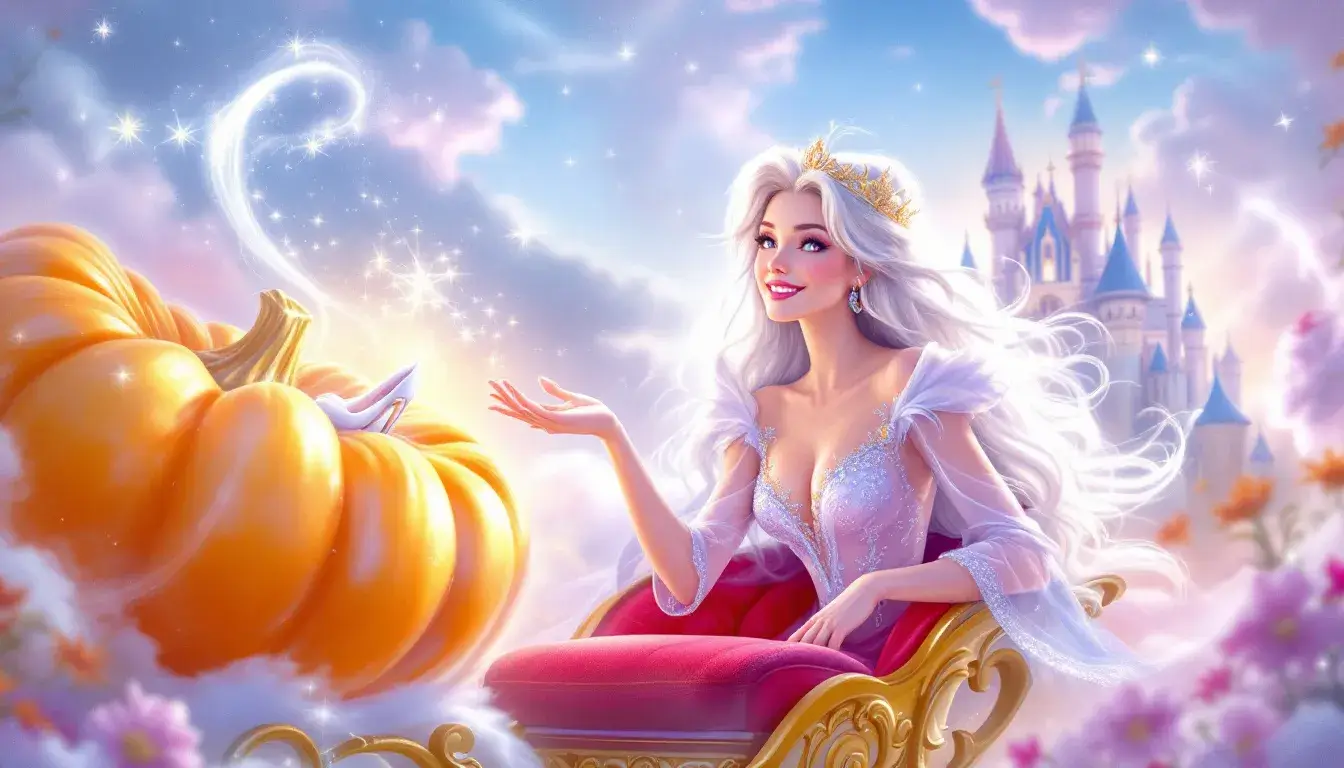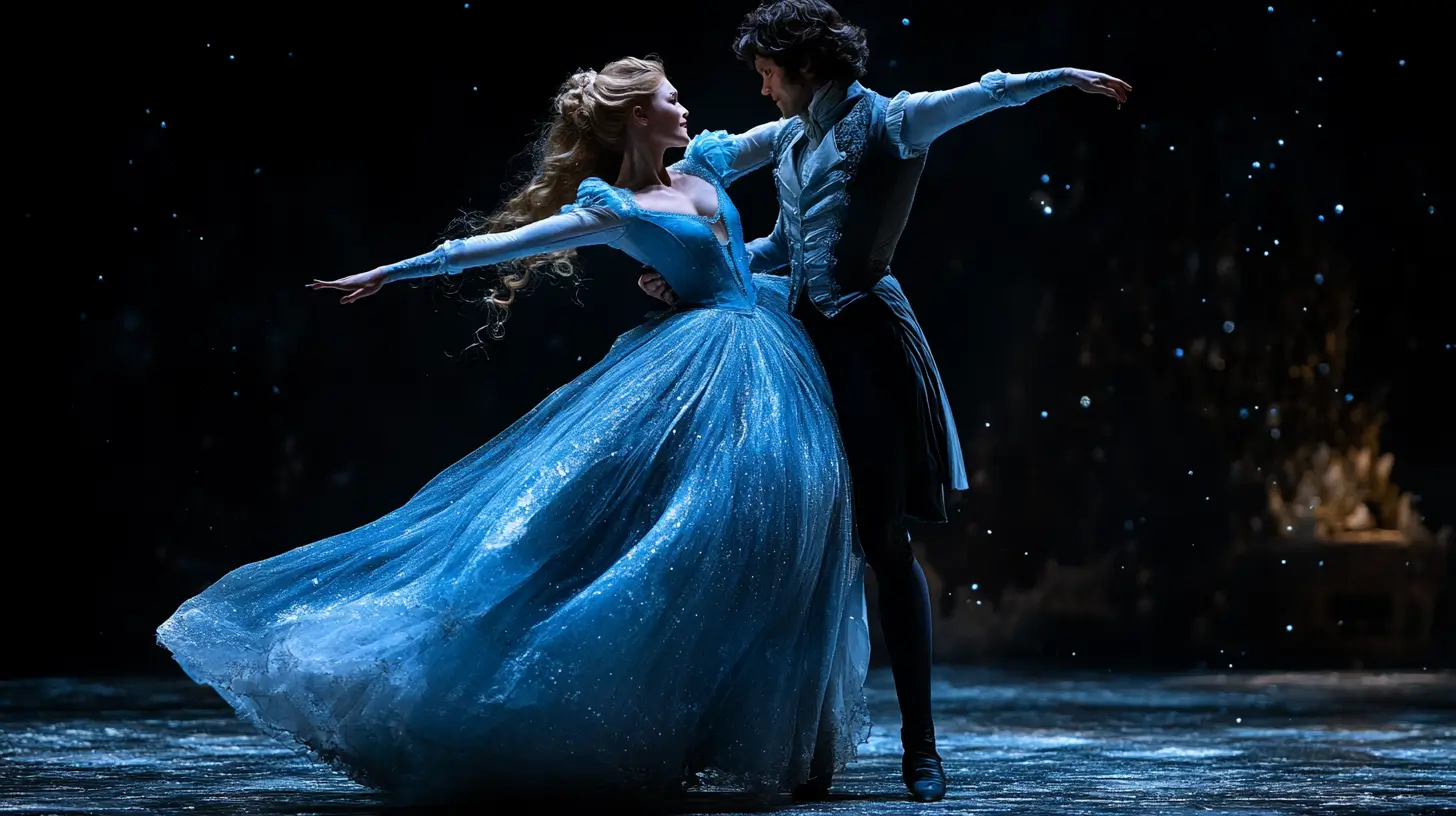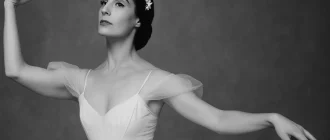The Cinderella ballet tells the story of a kind young woman who, with her fairy godmother’s help, attends a royal ball and captures the heart of a prince. Composed by Sergei Prokofiev, it combines beautiful music and choreography. This Cinderella ballet overview covers its history, characters, acts, and themes.
Key Takeaways
- The Cinderella ballet is a timeless production known for its enchanting storytelling, rich history, and magical transformation scenes that captivate audiences of all ages.
- Sergei Prokofiev’s version of Cinderella, which premiered in 1945, significantly shaped the ballet’s repertoire, showcasing a harmonious blend of emotional depth in music and classical choreography.
- Key themes of perseverance, kindness, and the triumph of good over evil permeate the ballet, reinforcing the narrative that dreams can be realized through resilience and forgiveness.
Art de Podcast
| Category | Details |
|---|---|
| Title | Cinderella |
| Composer | Sergei Prokofiev |
| Choreographer(s) | Rostislav Zakharov originally choreographed it, and later modern adaptations were created by Frederick Ashton, Rudolf Nureyev, and others. |
| Premiere | November 21, 1945 |
| Venue of Premiere | Bolshoi Theatre, Moscow, Russia |
| Based On | The fairy tale “Cinderella” by Charles Perrault |
| Notable Versions | Frederick Ashton’s 1948 version, Rudolf Nureyev’s modern reinterpretation |
| Acts | Three |
| Themes | Love, magic, transformation, hope |
| Key Characters | Cinderella, Fairy Godmother, Prince, Stepsisters, Stepmother, Father |
| Famous Music Sections | Waltz of the Stars, Midnight Scene, Cinderella’s Departure |
| Signature Ballet Moves | Graceful adagios (Cinderella and Prince pas de deux), comedic dances (Stepsisters) |
| Costume Highlights | Glittering ball gown for Cinderella, whimsical fairy costumes, elaborate court dresses |
| Set Design Elements | Lavish palace scenes, enchanted forest, and pumpkin carriage transformation |
| Performance Duration | Approximately 2–2.5 hours |
| Modern Popularity | Frequently performed worldwide; part of many companies’ holiday season repertoire. |
| Unique Feature | Combining humor (Stepsisters’ antics) with romantic elegance |
The Magic of Cinderella Ballet

The Cinderella ballet is a world-class production for all ages, blending timeless storytelling with stunning visual effects and moving performances. One cannot help but be captivated by the transformative power of Cinderella’s fairy godmother, who turns her ragged appearance into that of a beautiful princess, ready for the palace ball.
This magical transformation, complete with the iconic glass slippers, never fails to elicit gasps of wonder from the audience.
The story’s universal appeal lies in its ability to transport viewers into a world where dreams come true and love triumphs against all odds. From the moment Cinderella’s first slipper falls and the fairy godmother appears to the dramatic scene where the second slipper also falls, leaving Cinderella with the remaining glass slipper, the ballet is a journey through a fairy-tale wonderland.
The beautiful fairy godmother warns Cinderella that she must return before midnight, adding a layer of urgency and excitement that makes this production a timeless classic that continues to enchant audiences. This is a fairy godmother’s warning that resonates throughout the story.
Historical Background
The Cinderella ballet has a rich history that dates back to the early 19th century. The first significant ballet version premiered in 1813, followed by another notable production in 1822, which laid the groundwork for future adaptations.
However, it was the version composed by Sergei Prokofiev that truly cemented Cinderella’s place in the ballet repertoire. This version, choreographed by Rostislav Zakharov and featuring Galina Ulanova in the lead role, premiered on November 21, 1945, at the renowned Bolshoi Theatre in Moscow.
Prokofiev composed the music for Cinderella between 1940 and spring, summer, and autumn 1944, a period marked by the upheavals of World War II. Interestingly, he temporarily halted work on Cinderella to compose his opera War and Peace, reflecting the challenging times during which this masterpiece was created. Despite these difficulties, Prokofiev’s Cinderella emerged as a triumph, captivating audiences with its beautiful score and emotional depth.
Key Characters
At the heart of the Cinderella ballet is the character of Cinderella, a kind and resilient young woman who embodies the spirit of perseverance. Forced into servitude by her cruel stepmother after the death of her father, Cinderella leads a life filled with sorrow and longing for her deceased mother. Cinderella’s kindness shines through despite her hardships, making her a beloved character.
Her stepmother and stepsisters, Natasha and Sophia, play pivotal roles as the antagonists in the story. Forbidden from interacting with Cinderella due to their mother’s influence, they add to her misery, showcasing the stark contrast between their jealousy and Cinderella’s gentle nature.
The story follows Cinderella’s transformation and her magical journey to the palace ball, where the Prince immediately falls for her, finds her, and captures her heart in a Cinderella synopsis of Charles Perrault’s fairy tale.
Synopsis of Acts
The Cinderella ballet is divided into three acts, each depicting a crucial part of Cinderella’s journey from her humble home to the grandeur of the palace ball and finally to her reunion with the Prince.
Let’s delve into each act to understand the flow and highlights of this enchanting ballet.
Act I: Cinderella’s Home
Act I introduces us to Cinderella’s life at home. She is mistreated by her stepfamily, particularly her stepmother, who blames her for her husband’s death and treats her like a servant. Cinderella’s kindness is evident despite her hardships when she stops her stepsisters from teasing their father, showcasing her caring nature. The act also features a poignant moment when Cinderella gazes at a portrait of her dead mother, reflecting her deep emotional connection to her past.
A turning point in Act I is the arrival of an old beggar woman at Cinderella’s home. This seemingly insignificant event marks the beginning of Cinderella’s transformation, as the beggar older woman is later revealed to be Cinderella’s fairy godmother in disguise. This act sets the stage for the magical events, highlighting Cinderella’s resilience and her stepfamily’s cruelty.
Act II: The Palace Ball
Act II transports us to the grandeur of the palace ball, hosted by Prince Mikhail’s parents, who are friends of Cinderella’s father. As Cinderella enters, her beauty captivates the Prince, who mistakes her for royalty.
The fairy godmother’s warning foreshadows the story’s tension, highlighting the consequences of ignoring this advice. The act features a romantic dance between Cinderella and the Prince, deepening their connection and enchanting the audience.
However, the magic has a time limit. As the clock strikes midnight, Cinderella rushes home, leaving behind one of her glass slippers in her haste. This critical moment sets the stage for the Prince’s quest to find the mysterious girl who has captured his heart.
Act III: The Search and Reunion
Act III focuses on the Prince’s determined search for the owner of the glass slipper. As he travels far and wide, he encounters many young women, including Cinderella’s stepsisters, who fail to fit into the tiny slipper. The suspense builds as the Prince’s journey seems futile, but hope is rekindled when Cinderella reveals her hidden slipper.
This act culminates in the joyful reunion of Cinderella and her fairy godmother, as well as the Prince, marking the fulfillment of their love story. The appearance of Cinderella’s beautiful fairy godmother symbolizes the realization of Cinderella’s dreams and the triumph of kindness and perseverance over adversity, much like Cinderella’s fairy godmother.
Iconic Scenes and Elements
![]()
One of the most memorable moments in the Cinderella ballet is the transformation scene, in which Cinderella’s clothes turn into a beautiful gown, complete with the iconic glass slippers. This magical transformation is a visual spectacle representing deeper emotional truths and universal experiences. The scenes featuring her gown beautifully highlight the contrast between Cinderella’s humble beginnings and her fairy-tale transformation.
The ballet also features stunning costumes and effects, such as Cinderella’s skirt, which is made of multiple ethereal fabric layers, creating a magical visual impact during performances. The glass slippers, designed for dancers, add to the enchantment with their unique decorative decals attached to pointe shoes. These elements contribute to the ballet’s lasting impact and visual splendor.
Choreography and Music
The choreography of Cinderella beautifully blends classical dance with emotional storytelling, capturing the essence of the fairy tale. Marina Kesler’s choreography emphasizes fluidity and grace, incorporating contemporary influences while retaining classical ballet techniques. This approach allows the dancers to convey Cinderella’s emotional journey, making the performance deeply moving and relatable.
Sergei Prokofiev’s score for Cinderella features rich orchestration that enhances the ballet’s magical atmosphere. The music emphasizes three distinct themes: Cinderella’s trials, her reflective nature, and her ultimate joy in love. This captivating score, combined with the intricate choreography, creates a powerful and unforgettable performance.
Costumes and Set Design

Enchanting costumes and set designs are crucial in bringing the Cinderella ballet to life. The transformation of Cinderella’s clothes from rags to a magic gown is a pivotal moment that highlights the production’s visual splendor. The costumes are designed to reflect the characters’ personalities and the fairy-tale world they inhabit, adding depth to the storytelling.
The set design creates an enchanting atmosphere, transporting the audience into Cinderella’s world. From the humble home to the palace’s grandeur, the sets are meticulously crafted to enhance the overall magical experience. The stunning costumes and imaginative set design contribute to the ballet’s enduring appeal and visual impact.
Notable Performances
The Bolshoi Theatre’s production of Cinderella is considered one of the most significant performances of the ballet, contributing to its enduring popularity. The world premiere of Cinderella took place on December 17, 1893, at the Imperial Mariinsky Theatre, featuring Pierina Legnani as the Title Character. Legnani’s performance was so spectacular that it included executing 32 fouettés in the final act, leaving the audience in awe.
Other notable performances include Pavel Gerdt as Prince Charming and Anna Johansson as the Good Fairy in the original 1893 production. These performances, along with Legnani’s, solidified the ballet’s place in the repertoire and inspired generations of dancers and audiences.
Cinderella’s Themes and Messages

The Cinderella ballet incorporates themes of hope and transformation, drawing audiences into a fairy tale world through its choreography and storytelling. Cinderella’s character embodies perseverance and kindness in the face of adversity, illustrating the theme of transformation and the triumph of good over evil. Her journey from hardship to romance highlights the significance of love and maintaining a positive heart.
The appearance of Cinderella’s fairy godmother and the iconic glass slippers symbolize the fulfillment of dreams and the uniqueness of Cinderella’s identity. The narrative emphasizes that acts of kindness are ultimately rewarded, and forgiveness is a significant theme, as Cinderella chooses to forgive her stepsisters despite their mistreatment.
These messages resonate with audiences, making the ballet a timeless classic that continues to inspire.
Summary
The Cinderella ballet is a timeless production that continues to captivate audiences with its enchanting story, beautiful choreography, and magical music. From Cinderella’s humble beginnings to her transformation and ultimate reunion with the Prince, the ballet offers a journey filled with hope, love, and perseverance.
The iconic scenes, stunning costumes, and imaginative set design enhance the production’s visual splendor, making it a memorable experience for all.
In conclusion, the Cinderella ballet remains a beloved classic that transcends generations. It reminds us of the power of kindness and the magic of dreams. Whether you’re a seasoned ballet enthusiast or a newcomer, the Cinderella ballet will leave you spellbound with its timeless charm and enchanting storytelling.
CINDERELLA FULL BALLET CLOSE UPS Choreography MAINA GIELGUD
;
Frequently Asked Questions
When did the Cinderella ballet premiere?
The Cinderella ballet, composed by Sergei Prokofiev, premiered on November 21, 1945, at the Bolshoi Theatre in Moscow.
Who choreographed the original production of Prokofiev’s Cinderella?
Rostislav Zakharov choreographed the original production of Prokofiev’s Cinderella.
What are some key themes in the Cinderella ballet?
The Cinderella ballet prominently features themes of hope, transformation, the triumph of good over evil, kindness, and forgiveness. These elements highlight the enduring power of virtue and resilience in overcoming adversity.
What is the significance of the glass slipper in the Cinderella ballet?
The glass slipper is significant as it represents Cinderella’s distinctive identity and bond with the Prince, ultimately driving the plot toward their reunion.
Who performed the role of Cinderella in the ballet’s world premiere at the Imperial Mariinsky Theatre?
Pierina Legnani played Cinderella in the ballet’s world premiere at the Imperial Mariinsky Theatre in 1893.







